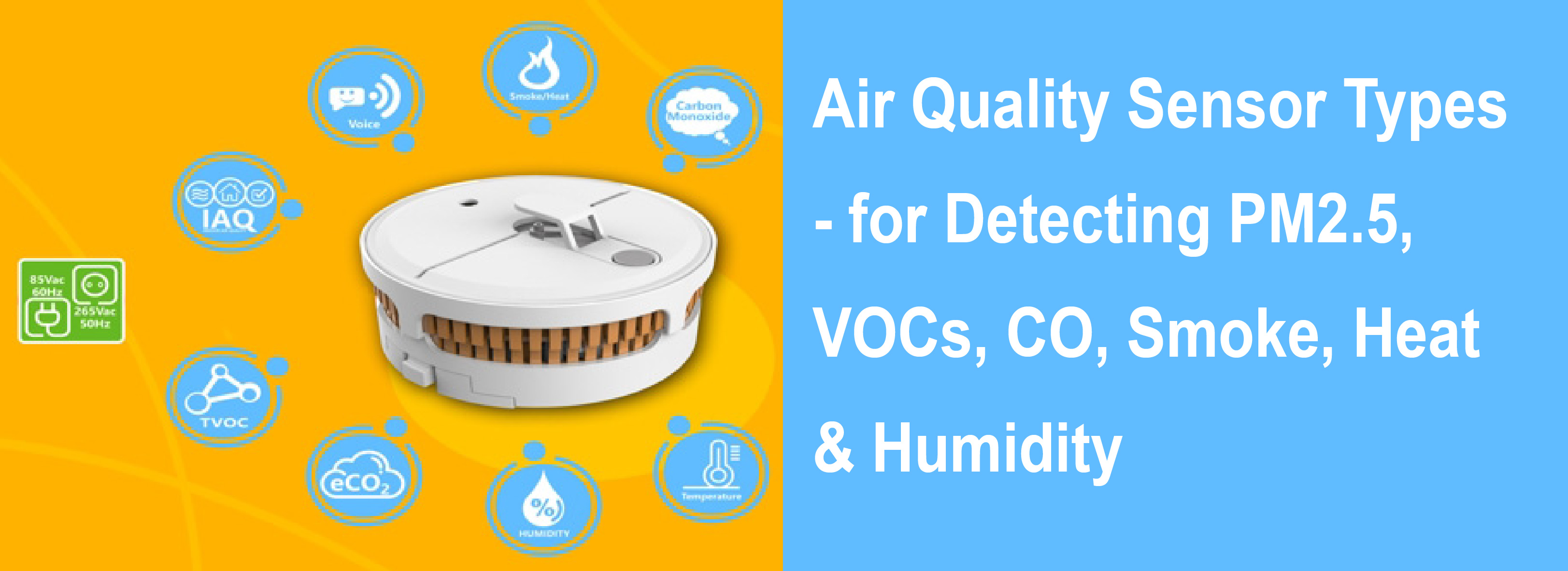The Importance of Air Quality Sensors for Better Health and Environmental Monitoring

What is an Air Quality Sensor?
Air quality sensors are important device that monitor the level of pollutants in the air, both indoors and outdoors. They can help track harmful substances like particulate matter (PM2.5 and PM10), ozone, volatile organic compounds (VOCs), carbon monoxide (CO), and other environmental hazards. By offering real-time data on air quality, air quality sensors allow businesses and individuals to make informed decisions about their health and air quality.
Here we’ll explore everything you need to know about air quality sensors: their working principles, the available types, the detectable pollutants, and why they’re essential for improving both personal health and environmental sustainability.
How Do Air Quality Sensors Work?
Air quality sensors operate using advanced technologies that detect and measure harmful pollutants in the air. These sensors are designed to analyze specific contaminants and provide information about the air quality in your environment.
- Gas Sensors: Measure gases like carbon monoxide (CO), carbon dioxide (CO2), nitrogen dioxide (NO2), and ozone (O3).
- Particulate Matter Sensors: Detect tiny particles, such as PM2.5 and PM10, that can harm your respiratory health.
- Temperature and Humidity Sensors: Measure temperature and humidity levels in the environment, which can affect pollutant concentration.
By using sensors like laser-based sensors, electrochemical sensors, and photoionization sensors, air quality monitors provide real-time feedback on pollution levels.
Types of Air Quality Sensors
There are various types of air quality sensors designed for specific environments and applications:
- Indoor Air Quality Sensors
- These sensors are ideal for homes and offices. They measure pollutants like PM2.5, CO2, and VOCs. Indoor air quality sensors can help you maintain a healthy living space by detecting and alerting you to poor air quality.
- Outdoor Air Quality Sensors
- Designed for environmental monitoring, outdoor air quality sensors are fixed and measure pollutants like nitrogen dioxide (NO2), ozone, and particulate matter in urban and industrial areas.
- Professional Air Quality Sensors
- Professional-grade air quality sensors are used in scientific research, government air quality monitoring stations, and industrial plants. These sensors offer high precision and accuracy for reliable data.
- Portable Air Quality Sensors
- Portable air quality monitors are compact, personal devices that can be taken anywhere to measure air quality. They provide real-time data to travelers or professionals that want to obtain the air quality data at a particular location.
Key Pollutants Detected by Air Quality Sensors
Air quality sensors are capable of detecting several harmful pollutants that impact human health and the environment. Common pollutants detected include:
- Particulate Matter (PM2.5 & PM10)
- These fine particles can cause serious respiratory issues, especially for children, the elderly, and individuals with pre-existing conditions like asthma.
- Volatile Organic Compounds (VOCs)
- VOCs are emitted by products like paints, cleaning agents, and furniture. Prolonged exposure can lead to headaches, dizziness, and respiratory issues.
- Carbon Monoxide (CO)
- A colorless, odorless gas that can be deadly at high concentrations, carbon monoxide is a major concern in homes with gas appliances or poor ventilation.
- Carbon Dioxide (CO2)
- Elevated CO2 levels indicate poor ventilation and can lead to fatigue, dizziness, and headaches.
- Ozone (O3)
- Ground-level ozone can cause lung damage and contribute to respiratory diseases.
- Nitrogen Dioxide (NO2)
- Typically found in urban areas due to vehicle emissions, NO2 can irritate the respiratory system and exacerbate asthma.
Benefits of Using Air Quality Sensors
Investing in air quality sensors provides numerous benefits such as below:
- Health Monitoring: By detecting harmful pollutants like PM2.5 and carbon monoxide, air quality sensors help you stay informed about the air you breathe, reducing the risk of respiratory and cardiovascular diseases.
- Real-Time Data: Real-time air quality data allows for taking immediate action if pollutant levels rise, such as activating an air purifier or increasing ventilation.
- Environmental Awareness: Air quality sensors help raise awareness of environmental pollution and can be used for tracking trends and pollution sources over time.
- Improved Indoor Air Quality: By monitoring air quality in your home or office, one can adjust to improve ventilation, reduce exposure to indoor pollutants, and create a healthier environment.
- Smart Home Integration: Many modern air quality sensors can wirelessly integrate with IoT & smart home devices, allowing you to automate air quality improvements based on sensor readings.
Choosing the Right Air Quality Sensor for Your Needs
When selecting an air quality sensor, there are several factors to consider:
- Pollutants Monitored: Make sure the sensor detects the specific pollutants that are a concern in your area (e.g., PM2.5 particulate matter, VOCs, CO2, etc.).
- Accuracy and Calibration: Look for sensors with high accuracy and updated calibration to ensure reliable readings.
- User Interface: Opt for sensors with a clear display or smartphone integration for easy monitoring.
- Price and Features: Balance cost and features. Professional-grade sensors offer more detailed data but can cost more.
Investing in an air quality sensor is a step toward cleaner air, healthier living, and greater environmental responsibility.
For any product inquiry or development projects, please contact one of our specialists for more information.

